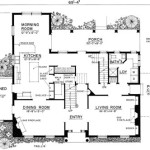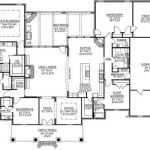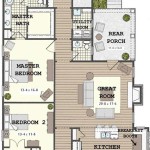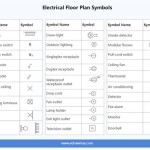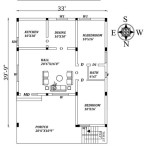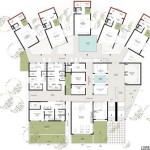Essential Aspects of Tiny Home Floor Plans Without Lofts
When it comes to designing a tiny home floor plan without a loft, there are certain essential aspects to consider to ensure optimal functionality and comfort. Unlike homes with lofts, loftless tiny homes require creative utilization of space and thoughtful design to accommodate all necessary elements within a compact footprint.
1. Efficient Space Planning
The key to designing a loftless tiny home is maximizing space efficiency. By eliminating the vertical space occupied by a loft, it's crucial to optimize the horizontal layout. Consider multi-purpose furnishings, such as a sofa bed that doubles as a seating area and a sleeping space. Utilize vertical storage solutions, like shelves and drawers, to keep belongings organized and off the floor.
2. Open Floor Plan
Open floor plans create a sense of spaciousness in small spaces. By minimizing walls and partitions, the entire space is visually connected, enhancing the perception of size. Open floor plans also facilitate natural light penetration and make it easier to move around the home.
3. Smart Storage Solutions
Storage is of utmost importance in loftless tiny homes. Incorporate built-in storage into the walls, under the stairs, and in other underutilized areas. Utilize vertical space with tall cabinets and shelves. Consider hidden storage compartments in furniture, such as drawers under beds or benches.
4. Multi-Purpose Areas
To maximize space efficiency, consider designating areas that serve multiple functions. For instance, the dining area can also be used as a workspace or a craft corner. The living room can be transformed into a guest sleeping area with a pull-out couch. Multi-purpose areas eliminate the need for separate rooms, saving valuable square footage.
5. Ample Natural Light
Natural light can make a tiny home feel larger and more inviting. Utilize large windows and skylights to bring in as much natural light as possible. This not only enhances the ambiance but also reduces the reliance on artificial lighting, saving energy.
6. Ventilation and Airflow
Proper ventilation is crucial in loftless tiny homes to prevent moisture buildup and maintain a comfortable indoor climate. Incorporate cross-ventilation by placing windows on opposite sides of the home. Utilize ceiling fans or vents to circulate air and prevent stale air from lingering.
7. Exterior Space Utilization
If possible, extend the living space outdoors by incorporating a deck or patio. This provides additional room for relaxation, entertaining, or storage. Utilize outdoor space for activities like gardening or simply enjoying the fresh air. Connecting the interior and exterior seamlessly creates a more spacious and inviting overall design.
Conclusion
Designing a tiny home floor plan without a loft requires careful consideration of space efficiency, functionality, and aesthetics. By implementing the essential aspects discussed above, you can create a comfortable and well-functioning tiny home that meets your specific needs. Remember to prioritize smart storage, open floor plans, multi-purpose areas, and ample natural light to make the most of your compact space.

Tiny House Floor Plan With No Loft Plans Small Best

Tortoise S Floor Plan For An 8x32 No Lofts And Steps Ladders But Very L O N G Diy Tiny House Plans Building A

117 Sq Ft No Loft Tiny Home Tumbleweed Elm 20 Horizon House Pins

A Three Full Bed Tiny House Design Floor Plan With Twin And Queen Upstairs No Storage Loft Plans Small

Tiny House Floor Plans With Lower Level Beds Tinyhousedesign

Tiny Houses Without Lofts House Blog

Why You Need A One Story Tiny House Without Loft The Life

Tiny House Floor Plans With Lower Level Beds Tinyhousedesign

The Fair House Tiny Homes Pratt Tyler

Top 10 Tiny Houses On Wheels With Downstairs Bedrooms

